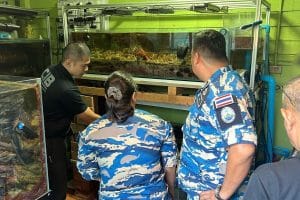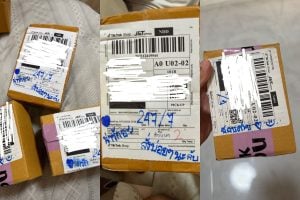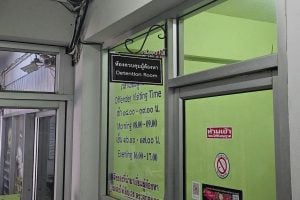5 Thai habits you didn’t know are secretly saving the planet (and what we can learn from them)
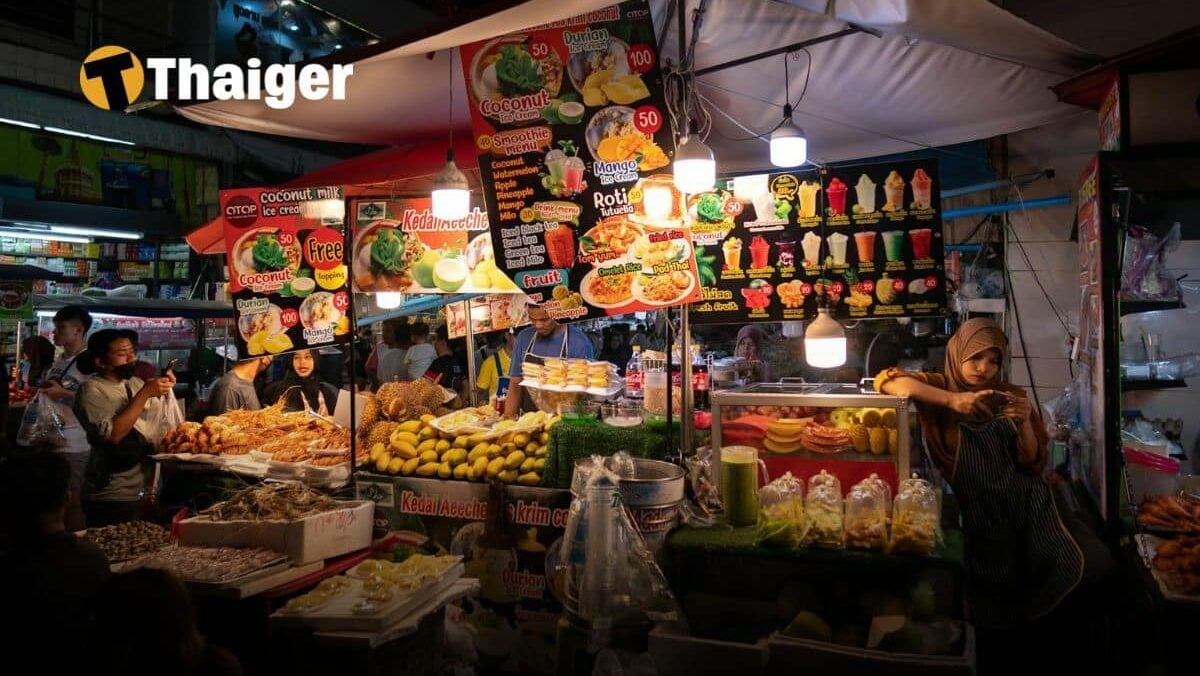
Thailand’s full of things that make you look twice, like the tuk-tuks, the tangled electric wires, and the fact that it can rain sideways and still feel like summer. But hidden in the chaos are everyday habits that are, without meaning to be, surprisingly eco-friendly.
Spend a bit of time here and you’ll spot the small, brilliant habits everywhere, the kind of everyday things that feel so normal you almost miss how clever they are. Here are five small but brilliant ways Thailand’s been keeping it green, long before ‘eco-friendly’ become a buzzword.
1. Banana leaves > plastic wrap (most of the time)
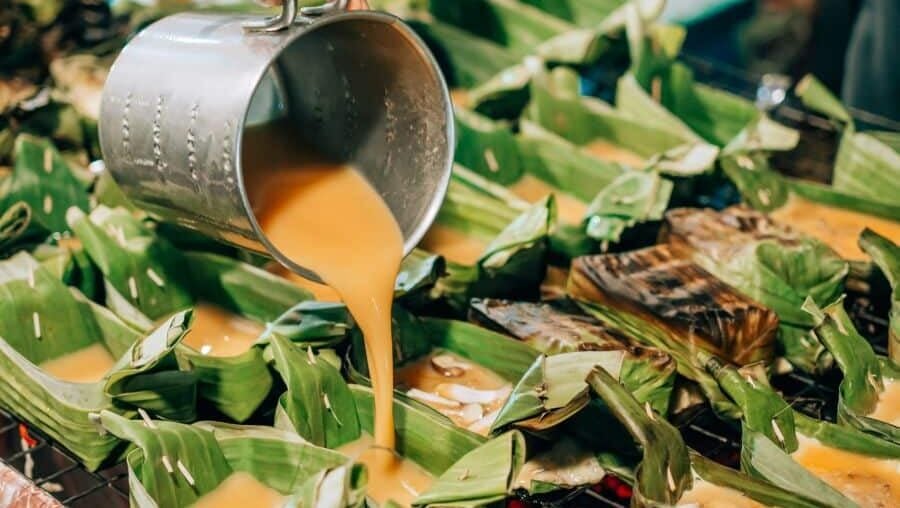
Long before anyone worried about ‘zero waste’ or made documentaries about the death of the planet, Thai people were already doing it properly. They’ve been wrapping food in banana leaves for a long time. Banana trees grow everywhere around the country, the leaves are the size of small dinner tables, and they happen to be waterproof, flexible, and naturally antibacterial.
You’ll still see it today, especially if you’re wandering through a fresh market early in the morning. From sticky rice and grilled meats to Thai desserts that you’ll probably never learn the name of but will happily eat anyway, they’ll be bundled up in little parcels tied with strips of bamboo.
Of course, that’s if you’re at a local market. If you’re in minimarkets, say, 7-Eleven, it’s a slightly different story. You’ll probably receive a plastic bag inside a plastic bag inside a plastic bag, like a Russian doll of environmental guilt. You’ll leave with a sandwich, a drink, and enough plastic to build a small greenhouse.
@thethaigerofficial Plastic bags in Thailand are getting out of control . . . . #funny #funnyvideos #plastic #plasticbag #plasticpollution #environment #bangkok #pattaya #phuket #chiangmai #thailand #fyp ♬ original sound – The Thaiger
But still, the spirit of banana leaves lives on if you know where to look.
2. Motorbike taxis
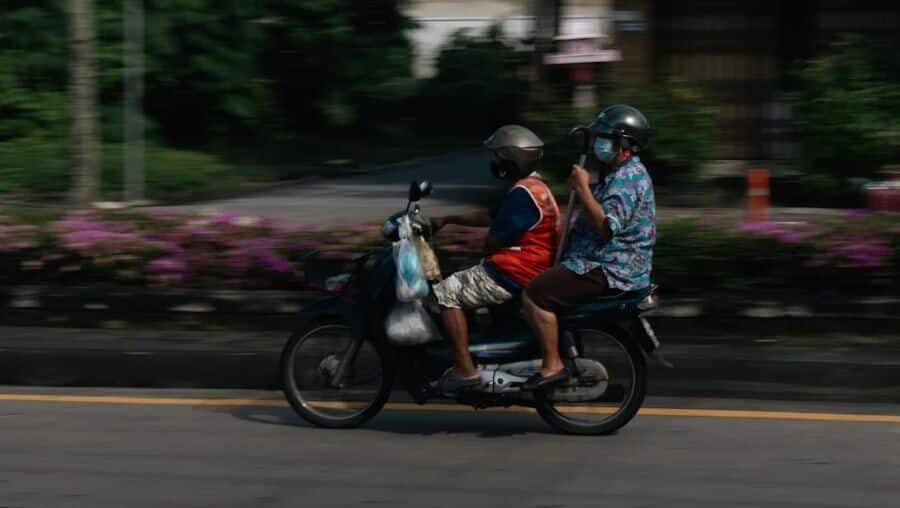
If you’ve ever sat in Bangkok traffic long enough to start questioning your life choices, you’ll understand why motorbike taxis exist. While the cars sit, the bikes slip between buses, balancing three people and a shopping bag without batting an eye.
They’re quick. They’re slightly terrifying. And, without even trying, they’re a lot better for the environment than all those SUVs clogging the roads. A typical motorbike in Thailand pumps out about 42.5 grams of CO₂ per kilometre. On the other hand, a regular petrol car belches out around 166.1 grams of CO₂ per kilometre. This means that taking a motorbike taxi produces about 74% less carbon emissions than driving your car.
It’s not all halo and sunshine, though, motorbikes can release more hydrocarbons and nitrogen oxides because their engines are usually less tightly regulated. But when it comes to sheer fuel efficiency and getting people through the city without gridlock-ing every street in sight, the humble motorbike taxi quietly does a lot of heavy lifting.
Most people climb on the back because they’re late, not because it’s eco-friendly and they’re trying to save the planet. Still, fewer cars stuck in traffic means fewer hours of engines idling, and in a place like Bangkok, that adds up fast.
3. Real cutlery at street stalls

Elsewhere, ordering street food often means accepting that you’re about to eat something delicious with a plastic fork that will snap at the worst possible moment. Not in Thailand. Here, you get a proper metal spoon and fork at most street food stalls. They’re washable, reusable, and solid enough to actually pick up your food without fear.
It might seem like a small thing, but using reusable cutlery cuts down massively on single-use plastic waste. It also adds a little something special to the eating experience. Real cutlery feels better in your hands than flimsy plastic alternatives. With millions of meals eaten on the streets of Thailand every day, this simple habit has a big impact.
4. Eating communally

Ordering your own dish is fine, but it’s not really the Thai way. Meals are meant to be shared. Everyone orders something, and the plates land in the middle. You take a bit of this and a bit of that until you’re full.
It’s casual, delicious, and also accidentally reduces food waste, because you’re less likely to leave half a portion behind when everyone’s picking at everything. Somehow, it makes eating feel less like consumption and more like an event, even if you’re just sitting on plastic stools under a flickering fluorescent light.
5. Hand washing laundry and line drying

Somewhere between the invention of electric dryers and the obsession with convenience, a lot of places forgot that the sun exists and works for free. But in Thailand, it’s still perfectly normal to hand wash a few things and hang them outside, letting the sun and air do their thing.
Line drying uses zero electricity and leaves clothes with a fresh, sun-kissed smell that no machine can truly replicate. Hand washing is also very eco-friendly. It saves water compared to machine cycles, especially when only a few items need cleaning.
View this post on Instagram
While Thailand faces its share of modern environmental challenges, there’s a lot the world can learn from the country’s everyday habits. These traditions show that sustainable living doesn’t always require fancy gadgets or complicated solutions. Sometimes, it’s the simple things that quietly make the biggest difference.
This article is based on a Thaiger Life Instagram post by Ploy Piti-isariyaporn
Latest Thailand News
Follow The Thaiger on Google News:






